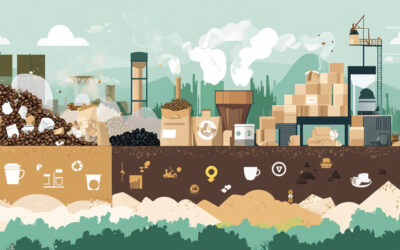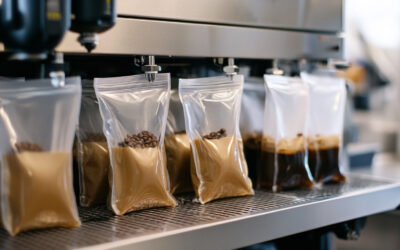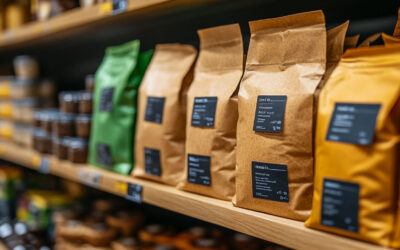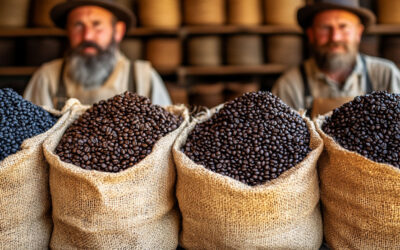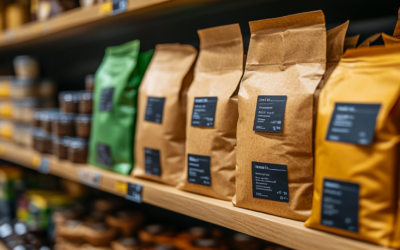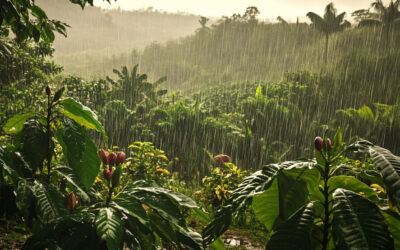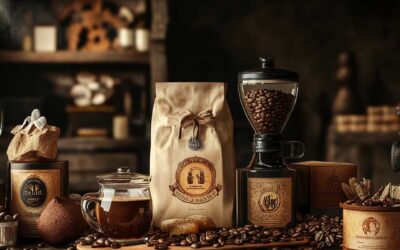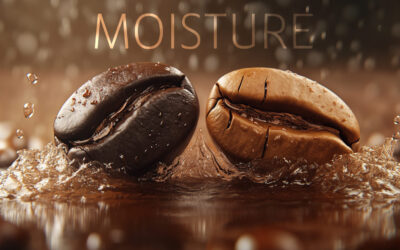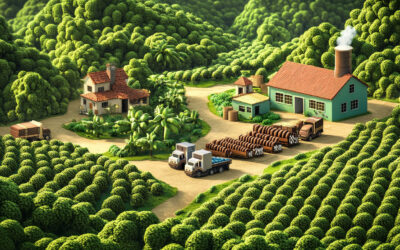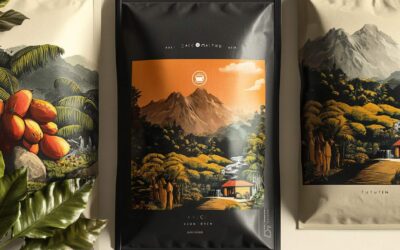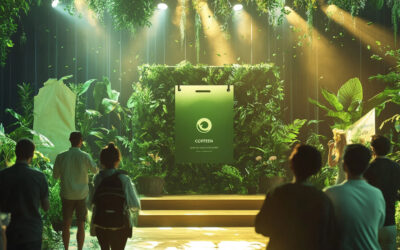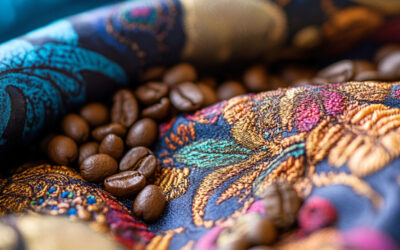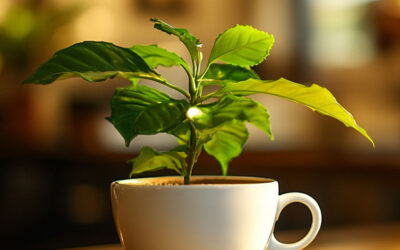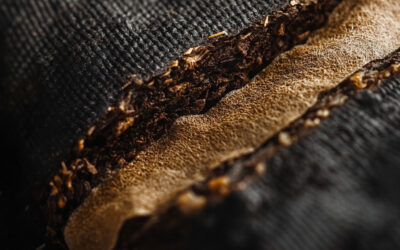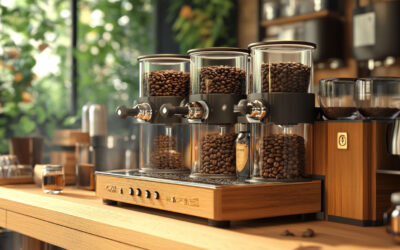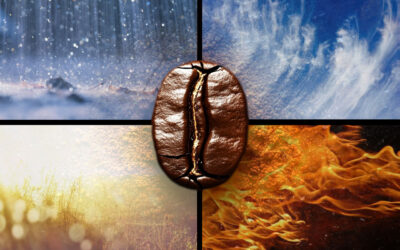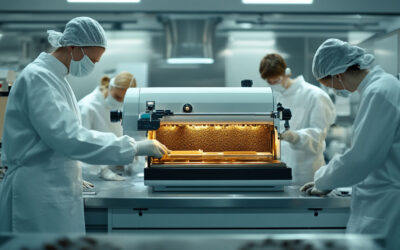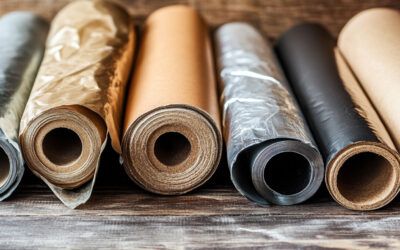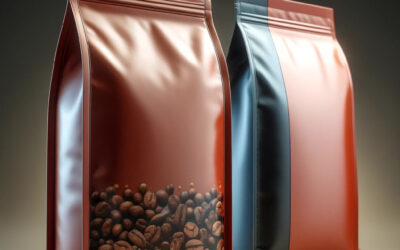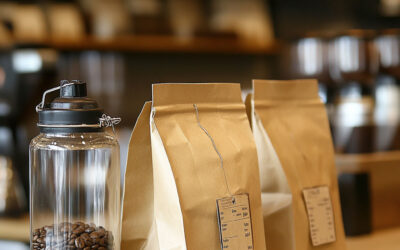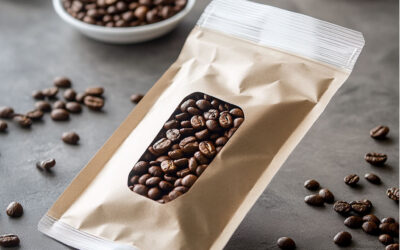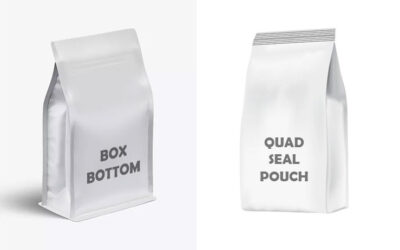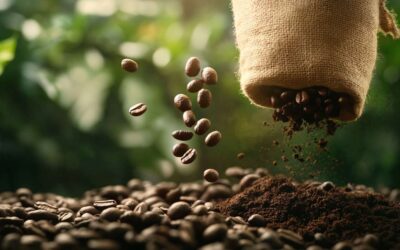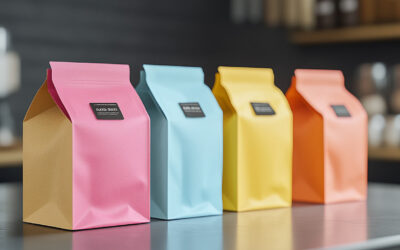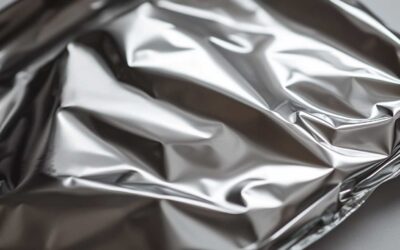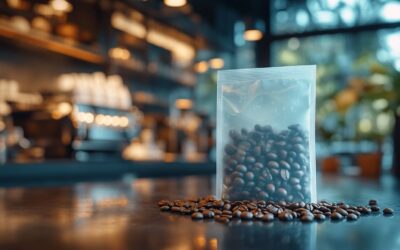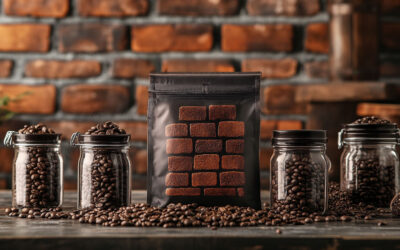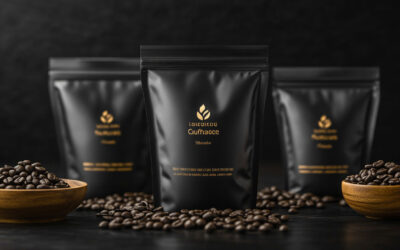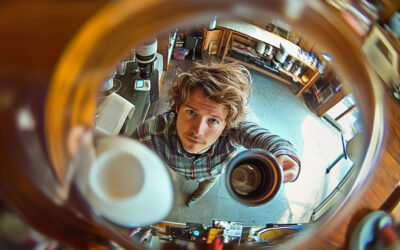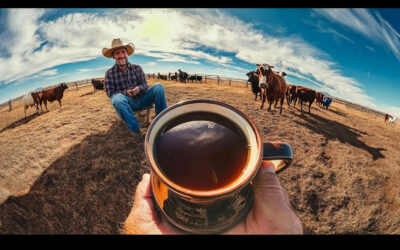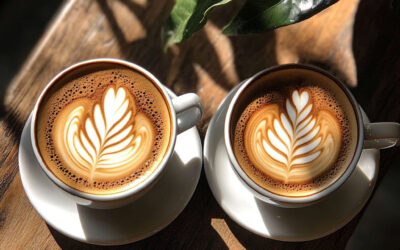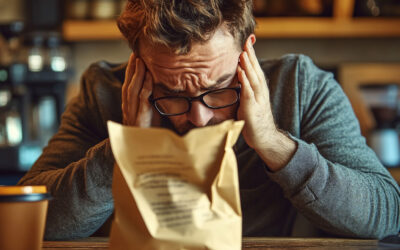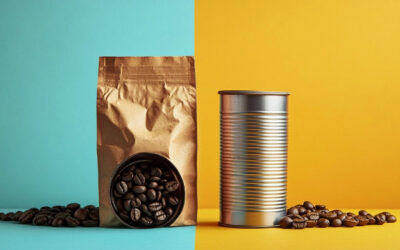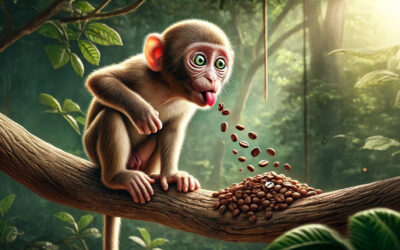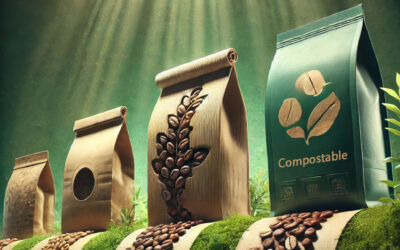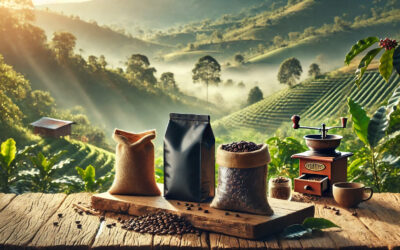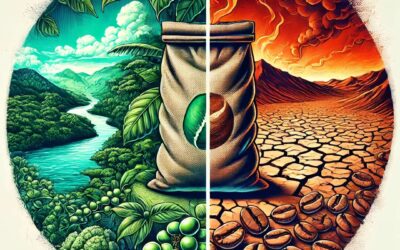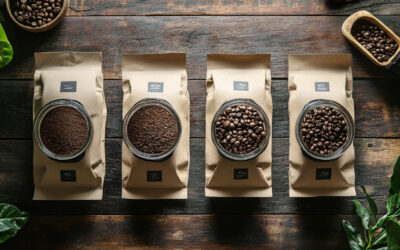BLOG Y RECURSOS
LOS FUNDAMENTOS
Grounds for Change: Rethinking Coffee Packaging Bag Waste
Coffee packaging waste is a growing issue, but brands have more options than ever to cut their impact. From recyclable materials to closed-loop upcycling programs like Savor Brands’ R+R® with ByFusion and HydroBlox, the industry is moving toward more sustainable solutions.
Why Coffee Packaging Matters: The Secret to Freshness and Aroma
Ever wonder why some coffee tastes fresh and rich while others seem stale? The answer often lies in the packaging. Coffee is highly sensitive to air, light, moisture, and even temperature changes. The right packaging doesn’t just make coffee look good—it plays a critical role in preserving flavor, aroma, and quality.
What Must Be on a Coffee Bag? Essential Labeling Requirements
Ever wondered what legally needs to be on a coffee bag? From required details like origin and weight to optional but helpful extras, this guide covers the key information every coffee roaster should include on their packaging.
How the Amish Make and Package Coffee Without Modern Technology
When it comes to coffee, most people imagine high-tech espresso machines or mass-produced packaging lines. But for the Amish, coffee-making is a craft rooted in simplicity, tradition, and quality. Without relying on modern conveniences like electricity or automated machinery, the Amish have perfected their own methods of roasting, grinding, and packaging coffee—all by hand.
Coffee Bag Sizing 101: How to Choose the Right Fit for Freshness & Flavor
If you love coffee, you know that freshness is everything. The size of your coffee bag plays a big role in maintaining that rich aroma and bold taste. Whether you’re packaging coffee for a business or just buying in bulk for personal use, picking the right bag size is crucial. Too big, and your coffee could go stale before you finish it. Too small, and you might find yourself running out too quickly.
Why Altitude Matters: How Elevation Affects Coffee Flavor Profiles
If you’ve ever wondered why some coffees taste richer, more vibrant, or fruitier than others, the answer often lies in elevation. Coffee beans are deeply influenced by the environment they grow in, and altitude plays a crucial role in shaping their flavor. Higher elevations create unique growing conditions that slow the maturation of coffee cherries, leading to beans with enhanced acidity, complex flavors, and a cleaner finish. Understanding the impact of altitude on coffee flavor can help you choose the perfect brew to suit your taste.
From Drizzle to Drought: The Impact of Rainfall on Coffee Quality
Rainfall is one of the most influential factors in coffee production. The right amount of water helps coffee plants grow, develop rich flavors, and produce high-quality beans. However, too much rain can flood coffee fields, weaken plants, and dilute flavors, while too little rain can stunt growth and reduce yields. Understanding the balance between wet and dry conditions is key to producing the best coffee.
Coffee Packaging Through the Ages: The Origins of a Brewing Essential
Discover the fascinating history of coffee packaging and how John Arbuckle revolutionized the industry in 1865 with his innovative pre-packaged coffee bags. Learn about the origins of coffee storage from the 1700s to the 1860s, and uncover the story of America’s oldest coffee brand, Gillies Coffee.
How does moisture affect coffee packaging?
Moisture is a coffee lover’s hidden enemy. From the moment coffee beans leave the farm to when they end up in your cup, moisture can wreak havoc on flavor, freshness, and aroma. This blog explores how moisture impacts coffee packaging, how to protect coffee at every stage, and whether damaged coffee can be salvaged.
Coffee Packaging Machines: Revolutionizing How Your Coffee is Delivered
Coffee packaging machines play a vital role in delivering fresh, aromatic coffee from manufacturers to your favorite cup. But have you ever wondered what happens behind the scenes? These machines are marvels of engineering, carefully designed to package coffee efficiently, preserve its quality
SUBIENDO DE NIVEL
How Coffee Packaging Sells More Than Just Beans
In the coffee business, first impressions matter. And your packaging? That’s often the first thing people see. When done right, packaging isn’t a cost—it’s a smart investment. Pair it with the right marketing, and it becomes a growth engine that brings in more customers, builds loyalty, and increases profit. Here’s how your coffee packaging should be working for you—and why it should earn back every dollar you spend on it.
Sustainable Inks and Adhesives: The Hidden Environmental Cost of Coffee Packaging
Sustainability in coffee packaging goes far beyond recyclable paper or compostable bags. The real environmental challenge lies in the details—like the adhesives that hold the bags together and the inks used to print your favorite designs. This article takes a deeper dive into the hidden costs behind eco-friendly claims, exploring how much effort it takes for companies to achieve true sustainability certifications, and why every layer of your coffee bag matters.
More Than a Bag: How Coffee Packaging Builds Brand Loyalty
A coffee bag isn’t just a container—it’s your brand’s first handshake with a customer. Great packaging goes beyond looks. It tells a story, shows value, and sparks connection. Discover the key elements that turn an ordinary coffee bag into a powerful brand experience.
Digital vs. Traditional Printing: The Greenest Choice for Coffee Packaging
Choosing the right printing method for coffee packaging isn’t just about aesthetics—it’s about sustainability. Digital and traditional printing each have different environmental impacts, and understanding their differences can help brands make an eco-conscious choice. This guide explores which printing method is the greenest for coffee packaging and what factors businesses should consider when going sustainable.
The Cost of Sustainability: Is Eco-Friendly Coffee Packaging Worth It?
Eco-friendly coffee packaging is gaining traction, but is it worth the extra cost? This post explores the financial and environmental impact of sustainable packaging, weighing the benefits against the expenses. From compostable bags to biodegradable pods, find out whether making the switch is a smart business move or just another green marketing tactic.
The Science Behind Barrier Coatings in Coffee Packaging
Barrier coatings in coffee packaging play a crucial role in preserving flavor while also impacting sustainability efforts. These coatings protect coffee from moisture, oxygen, and light, ensuring a longer shelf life. But as the industry shifts toward eco-friendly alternatives, balancing performance with sustainability is a growing challenge.
The Rise of Refill Stations: A Zero-Waste Future for Coffee Packaging?
Coffee lovers are embracing a greener future with the rise of coffee bean refill stations. These zero-waste alternatives allow customers to bring their own containers, cutting down on single-use packaging. But what’s the best container to use, and can you refill an old coffee bag? Let’s explore how refill stations are shaping the future of sustainable coffee consumption.
How Coffee Packaging Keeps Your Brew Fresh: The Science Behind It
Coffee lovers know that freshness is key to a great cup. But what many don’t realize is how much packaging affects the taste of their favorite brew. Without proper protection, coffee loses its rich aroma and flavor quickly. Understanding the role of packaging in preserving freshness helps both consumers and businesses make better choices. Let’s explore why coffee packaging is crucial and how it extends the shelf life of your favorite beans.
Coffee Packaging Trends in 2025: How Specialty Roasters Are Adapting
The world of specialty coffee is constantly evolving, and 2025 is shaping up to be a pivotal year for packaging innovations. With sustainability, branding, and international trade playing major roles, roasters must stay ahead of the curve. From navigating tariffs to exploring white-label opportunities and rethinking fair trade models, the coffee industry is poised for big changes.
Inside the Coffee Packaging Chain: Every Step Explained
Behind every bag of coffee on the shelf is a detailed process that ensures freshness, protects quality, and enhances branding. The coffee packaging production chain involves multiple steps, from selecting materials to printing, filling, and distribution. Every stage plays a role in preserving coffee’s aroma and taste while meeting industry regulations. If you’re curious about how coffee packaging works, let’s dive into the key elements that make up this process.
FORMAS Y MATERIALES DE BOLSAS
Quad Seal vs. Flat Bottom Pouches: Which One is Right for Your Product?
When choosing the best packaging for your product, the battle between quad seal and flat bottom pouches comes down to material use, cost, and capacity. Both options offer unique advantages, but which one fits your needs best? In this article, we break down their differences to help you make the right choice.
Gusseted Coffee Bags: The Smart Choice for Freshness and Style
When it comes to packaging coffee, presentation and functionality go hand in hand. One of the most popular choices in the industry is gusseted coffee bags, also known as side gusset coffee bags. These bags are designed to protect the coffee’s flavor while offering an attractive and space-efficient packaging solution. But what exactly is a gusset, and how does it affect packaging? Let’s break it down and compare gusseted vs. non-gusseted bags to see which is best for coffee storage.
The Ultimate Guide to Coffee Bags: Choosing the Perfect Packaging for Your Roasted Beans
If you’re in the coffee roasting business, you already know how important packaging is. A great coffee bag isn’t just about aesthetics—it plays a crucial role in preserving freshness, maintaining quality, and showcasing your brand. But with so many options available, how do you choose the right one?
Coffee Packaging Showdown: Flat Bottom vs. Quad Seal Bags
When it comes to flexible packaging, two popular choices stand out: quad seal bags (also known as stand-up pouches) and flat bottom bags (also called block bottom or box pouches). Each option has its advantages and drawbacks, making it essential to choose the right one based on your product’s needs.
What are the Advantages of a Pillow Shape Coffee Bag?
When it comes to coffee, freshness is everything. The way coffee is stored and packaged plays a huge role in preserving its aroma, flavor, and overall quality. That’s why choosing the right packaging is so important. One option that stands out among the rest is the pillow shape coffee bag. Unlike standard flat pouches or bulky canisters, this style of packaging is designed to enhance storage efficiency while maintaining peak freshness.
Why Quad-Seal Coffee Bags Are the Best Choice for Packaging
When it comes to coffee packaging, freshness and durability are key. That’s where quad-seal coffee bags come into play. These high-quality bags are specifically designed to maintain the rich aroma and flavor of coffee while offering a sleek, professional appearance. Whether you’re a coffee roaster or a brand looking for top-tier packaging, quad-seal bags provide the strength, flexibility, and airtight sealing needed to keep coffee at its best.
Coffee Packaging: Is Metallized Polyester the Right Choice?
When it comes to coffee packaging, maintaining freshness and flavor is a top priority. Coffee is a delicate product that reacts to factors like oxygen, moisture, and light, making packaging materials a crucial consideration for producers. Metallized polyester, commonly referred to as METPET, is often touted as an effective packaging material for coffee. But is it truly the best option? Let’s dive into its advantages and disadvantages to see if METPET is the right choice for your coffee packaging needs.
Frosted vs. Aluminum Bags for Coffee: Which Provides the Best Light Protection?
Choosing the right coffee bag can make a significant difference in maintaining freshness and flavor. Frosted bags have gained popularity, but is their light protection on par with aluminum bags? Understanding the impact of light on coffee and how various bag types protect against it is essential for anyone in the coffee industry. Absolutely, coffee needs to be shielded from light.
What Is Brick Pack Coffee Packaging?
Brick pack coffee packaging, also known as vacuum-sealed packaging, is a method where coffee beans or ground coffee are tightly compressed into a brick-like shape. This method removes excess air, creating a solid, rectangular package that’s highly efficient for storage and transportation. Brick packs aren’t just functional—they offer several other advantages that make them a top choice for coffee lovers and sellers alike.
The Ultimate Guide to Stand-Up Coffee Bag Pouches: Why They are Taking Over
Coffee packaging has come a long way, and stand-up coffee bag pouches are now at the forefront of that evolution. If you’re a coffee roaster, café owner, or just a curious coffee lover, this blog is your go-to guide for understanding the benefits of these modern pouches. We’ll also dive into size options, potential downsides, and even how these bags are made.
EL SECTOR PÚBLICO
Earth’s Month 2025 Check-In: Climate Wins, Coffee Waste, and What’s Next
April isn’t just about spring flowers and sunny weather—it’s Earth Month, the time to ask: How are we really doing when it comes to the planet?
If Earth could talk in 2025, she’d have some things to celebrate—and some things to question. We’ve made real strides in sustainability, from clean energy to corporate responsibility. But we’re also still hooked on waste, especially when it comes to how we package our everyday habits. Coffee culture, for example, says a lot about how we consume—and what we’re willing to change.
No Filter? No Problem—Creative Ways to Brew Coffee
If you’ve ever been desperate for coffee but realized you’re out of filters, you’re not alone. The good news? There are plenty of creative ways to brew your coffee without one—and some of them are pretty genius. Whether you’re stuck without supplies or just feeling inventive, these filter hacks will keep your caffeine fix alive.
Brewing Like the Wild West: Understanding Cowboy Coffee
Cowboy coffee is a traditional brewing method admired for its simplicity and rich flavor. Brewed by boiling coffee grounds directly in water, this outdoor classic remains a staple among campers and adventurers alike. Learn how cowboy coffee works, tips for a perfect cup, and why it’s an enduring favorite.
Specialty vs. Regular Coffee: Which One Packs a Healthier Punch?
Coffee is a daily ritual for millions, but not all cups of coffee are created equal. Specialty coffee has gained popularity for its high-quality beans, unique flavors, and precise brewing methods. But does it offer any real health benefits over regular, home-brewed coffee? Let’s dive into what makes specialty coffee different and whether it’s a healthier choice.
Cold Brew vs. Iced Coffee: The Ultimate Showdown of Chilled Caffeine
Coffee lovers, we need to settle this once and for all—what’s the real difference between cold brew and iced coffee? While both serve up a refreshing caffeine kick, they are worlds apart in how they’re made, their flavors, and even their caffeine content. If you’ve ever wondered which one is right for you, this guide will break it all down.
From Jitters to Zen: What Happened When I Replaced Coffee with Green Tea
I Swapped Coffee for Green Tea for 30 Days—Here’s How It Changed My Life Could a Simple Beverage Swap Make a Huge Difference? Like many people, my mornings weren’t complete without a steaming cup of coffee. The rich aroma, the jolt of energy—it was my daily ritual....
Third Wave Coffee vs. Specialty Coffee: What Sets Them Apart?
Coffee culture has transformed dramatically over the years, with more focus on quality, sustainability, and craft. Two terms often thrown around in the coffee world are Third Wave Coffee and Specialty Coffee—but what do they really mean? While they are closely related, they are not the same. This article breaks down the key differences and how they impact your coffee experience.
What’s in Your Cup? A Guide to Coffee Labels and Certifications
Have you ever stared at a coffee bag, wondering what all those labels and certifications mean? Organic, Fair Trade, Rainforest Alliance—these terms sound impressive, but do they really make a difference? Understanding coffee labels helps you choose the highest quality beans, supports ethical sourcing, and ensures you’re getting exactly what you expect in your morning brew.
Bagged vs. Canned Coffee: Which One Reigns Supreme?
For coffee lovers, freshness is everything. Whether you brew at home or grab a cup on the go, the way coffee is stored can have a major impact on its flavor, aroma, and quality. One of the biggest debates among coffee enthusiasts is whether bagged coffee is superior to canned coffee.
Monkey Poo Coffee (also comes with Spit)
Kopi Luwak, more commonly (and somewhat cheekily) referred to as “Monkey Poo Coffee,” has become a topic of fascination in the coffee world. Renowned for its sky-high price and peculiar production process, this coffee originates from Southeast Asia and holds a strange yet intriguing place in luxury coffee culture. Let’s explore what makes this coffee so unique, its surprising backstory, and how it compares to other quirky brews like Monkey Spit Coffee.
Idiomas Internacionales
¿Qué Debe Incluir una Bolsa de Café? Requisitos Esenciales de Etiquetado
¿Alguna vez te has preguntado qué debe incluir legalmente una bolsa de café? Desde datos obligatorios como el origen y el peso, hasta extras opcionales pero útiles, esta guía cubre la información clave que todo tostador de café debe incluir en su empaque.
La Ciencia Detrás de los Recubrimientos de Barrera en el Empaque de Café
Los recubrimientos de barrera en el empaque de café desempeñan un papel crucial en la preservación del sabor, pero también influyen en los esfuerzos de sostenibilidad. Estos recubrimientos protegen el café de la humedad, el oxígeno y la luz, garantizando una mayor vida útil. Sin embargo, a medida que la industria avanza hacia alternativas ecológicas, equilibrar el rendimiento con la sostenibilidad se convierte en un desafío cada vez mayor.
Del Papel a los Materiales de Origen Vegetal: El Futuro del Empaque Sostenible para Café
La industria del café siempre se ha centrado en el sabor y la calidad, pero en los últimos años, la sostenibilidad se ha vuelto igual de importante. Tanto los amantes del café como las marcas buscan formas de reducir su impacto ambiental, y el empaque juega un papel clave en ese esfuerzo. Lo que comenzó con simples bolsas de papel kraft ha evolucionado hacia soluciones compostables innovadoras, revolucionando la forma en que el café se empaca y se consume.
Por Qué las Bolsas de Café con Cuatro Sellos Son la Mejor Opción para el Empaque
Cuando se trata de empaque de café, la frescura y la durabilidad son fundamentales. Ahí es donde entran en juego las bolsas de café con cuatro sellos. Estas bolsas de alta calidad están diseñadas específicamente para conservar el rico aroma y sabor del café, al mismo tiempo que ofrecen una apariencia elegante y profesional. Ya seas un tostador de café o una marca en busca de un empaque de primera categoría, las bolsas de cuatro sellos brindan la resistencia, flexibilidad y sellado hermético necesarios para mantener el café en su mejor estado.
La sostenibilidad en el envasado de café recibe un impulso ecológico
Cambiar a envases de café a base de plantas es más que una tendencia: es un compromiso con la protección del planeta mientras disfrutas de tu bebida favorita. Con una frescura garantizada de hasta un año, estos materiales innovadores demuestran que la sostenibilidad y la calidad pueden ir de la mano. Con el aumento de las preocupaciones ambientales, las empresas están adoptando materiales de origen vegetal para el envasado de café.
Origen Único vs. Mezcla: ¿Qué es el Café de Origen Único?
Los amantes del café suelen debatir sobre las ventajas del café de origen único frente a las mezclas. Pero, ¿qué es exactamente el café de origen único y por qué ha ganado tanta popularidad en los últimos años? En esta publicación, desglosaremos la diferencia entre el café de origen único y las mezclas, exploraremos los sabores únicos de las variedades de origen único y descubriremos cuáles son los orígenes más apreciados.
Luz vs Café: ¿Cómo afecta la luz al empaquetado del café?
Coffee lovers know that freshness is everything. But did you know light exposure can ruin your favorite brew before you even open the bag? Light, especially UV rays, can break down coffee’s essential oils and compounds, leading to stale, lackluster flavors. This is why the right coffee packaging
Hirviendo de Calor: Los Efectos del Calor en el Café y su Empaque
Heat plays a critical role in the shelf life and quality of coffee. Whether you’re a coffee roaster, distributor, or enthusiast, understanding how temperature affects both the coffee and its packaging is essential for maintaining freshness. Excessive heat can cause coffee’s delicate flavors to degrade.
¿Cómo afecta la humedad al embalaje del café?
La humedad es el enemigo oculto de los amantes del café. Desde el momento en que los granos de café salen de la finca hasta que llegan a tu taza, la humedad puede arruinar el sabor, la frescura y el aroma. Este blog explora cómo la humedad afecta el embalaje del café, cómo protegerlo en cada etapa y si es posible recuperar el café dañado.
¿Qué es el embalaje sostenible para café?
¿Te apasiona disfrutar de tu café matutino mientras cuidas del planeta? Sumérgete en el mundo del embalaje sostenible para café y descubre cómo tomar decisiones ecológicas puede marcar una gran diferencia. Con el aumento de las preocupaciones sobre el impacto ambiental, es emocionante aprender cómo el embalaje moderno para café está…

